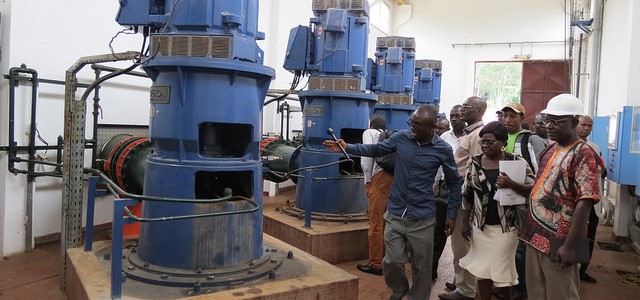Characteristics
Global water withdrawals in the last century have been increasing at an even greater rate than the global population, and by the year 2025 it is expected to be over 5,000 km3 per year. Efficiency in the supply and delivery of water is an important strategy towards achieving water security under these circumstances. It helps to ensure reliable water supplies by improving efficiencies in channel and pipe distribution networks, and by opening up alternative water sources. Supply efficiency can take place on many levels.
At the level of water utilities, efficient supply management may involve improvements in abstraction, treatment, bulk transfers, local distribution, consumer meters, revenue collection, appropriate economic analysis, and accounting procedures. Important tools for improving water supply efficiency for utilities include:
- Universal metering;
- Distributional zonal metering;
- Leakage and pressure reduction.
In fact, leakages and pressure reduction are responsible for up to 50% of water losses in irrigated agriculture before the water reaches users. In urban settings, the numbers can be 30% or even more. Consequently, improving piping systems or channels, mains replacement and renewal programmes are a big step towards managing water supply more efficiently. Dual supply systems of different water quality for different uses can also be a cost effective option to increase efficiency in water management (and may be useful for Recycling and Reuse, C3.03). One example of that would be to have separate systems for domestic use and for drinking water.
Rain water harvesting is an approach whereby rain is collected and stored in the soil profile or in tanks, ponds or cisterns to provide water for irrigation or domestic purposes rather than immediate evaporation. Rainwater harvesting is particularly useful where rainfall is highly seasonal and can reduce the volume lost to the community in run-off. It can be applied in both rural and urban areas where rainfall can be collected from roofs and hard surfaces.
When considering measures to improve water supply efficiency, a balance needs to be struck between the capital investment required for those measures and other investments needed in the water sector, in order to expand supply capacity or for maintenance. Often times, projects or programmes to save water can postpone major capital investments in supply infrastructure.
The introduction of efficient supply approaches in utilities or irrigation systems may need retraining and institutional reform (See B2.01 on targets and incentive structures for public service providers, B4.02 on increasing IWRM capacity and training of water professionals). Improving supply efficiency may also require investments in the distribution systems (subject to economic and financial appraisal, see A3; C7), institutional Capacity Building (B4), Consensus Building (C5.02), regulations for water quality (A2.01), Data Collection and management (B4.01; C1.02; C3), and Raising Awareness (C8.02).
Lessons learned
- Improved supply efficiency can postpone the need for new capital investment, but careful economic and financial analysis will be needed (C2.06).
- Some supply side techniques are capital intensive with high investment costs, such as the lining of irrigation canals.
- Rainwater harvesting is an effective intermediate technology with small capital requirements, and it holds great potential for community development and management.
- Technology changes in, for example, the delivery of irrigation water need to be accompanied by appropriate changes in irrigation practices in order to be effective. If an enhanced delivery system leads to an increased availability of water for use, but that use is wasteful, the overall balance doesn’t improve.
- All changes need to be supported by training (C4.02) and awareness raising campaigns (C8).
- Even though rain water harvesting may only provide water for a proportion of the year, it may be welcomed by poor people, women especially, as an alternative to carrying water from a more dependable but distant source.

